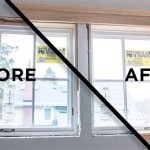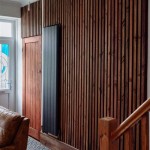What is an Interior Designer Salary Per Year?
The interior design profession offers a diverse range of career paths, encompassing residential, commercial, and specialized design fields. Understanding the potential earning capacity for interior designers is crucial for individuals considering this career, as well as for established professionals planning their career trajectory. This article explores the various factors influencing an interior designer's salary, examining the typical salary ranges, experience levels, geographical locations, and specializations that contribute to overall compensation.
Numerous variables shape the yearly income of an interior designer. These encompass experience, education, specialization, location, the type of company or clientele they work with, and their overall skillset. Generally, entry-level positions will command lower salaries compared to those with extensive experience and a proven track record of successful projects. Furthermore, advanced education, such as a master's degree or specialized certifications, can positively influence earning potential.
The scale and complexity of design projects also significantly impact salaries. Interior designers working on large-scale commercial projects, such as hotels, hospitals, or corporate offices, may earn more than those primarily focused on residential renovations. The demand for interior design services within a specific geographical region also plays a vital role. Areas with a thriving real estate market, significant commercial development, or a high concentration of affluent residents typically offer higher salaries.
Typical Salary Ranges for Interior Designers
The salary range for interior designers varies significantly depending on the factors mentioned earlier. Entry-level interior designers, typically with a bachelor's degree and limited experience, can expect to earn a starting salary that generally falls within a certain range. This range is influenced by local market conditions and the type of firm they join. Junior designers typically support senior designers, assisting with tasks such as drafting, sourcing materials, and creating presentations.
With several years of experience, interior designers can advance to mid-level positions. These roles often involve managing projects independently, leading design teams, and interacting directly with clients. As a consequence of increased responsibility and expertise, mid-level designers experience a notable increase in their earning potential. They are expected to have a solid grasp of design principles, building codes, and project management methodologies. They are also expected to have a strong portfolio showcasing their design skills.
Senior interior designers or design directors possess extensive experience and a proven track record of successfully completing complex projects. They often lead design teams, manage client relationships, and contribute to the firm's overall strategic direction. Their expertise allows them to command significantly higher salaries, reflecting their leadership roles and valuable contributions to the organization. Some senior designers choose to specialize in a specific area, such as sustainable design or healthcare design, further enhancing their earning potential.
Self-employed interior designers or those who own their own design firms have the potential to earn even higher incomes, but their earnings are often less predictable and directly tied to their business's success. The income of a self-employed designer depends on their ability to attract clients, manage projects efficiently, and maintain profitability. While the financial rewards can be significant, self-employment also entails managing administrative tasks, marketing efforts, and financial responsibilities.
It's crucial to consult reliable sources, such as industry surveys and salary databases, to obtain the most up-to-date and accurate salary information for specific geographic locations and experience levels. Additionally, networking with other interior designers can provide valuable insights into current salary trends and compensation practices.
The Impact of Location on Interior Designer Salaries
Geographical location significantly impacts an interior designer's salary. Metropolitan areas and regions with a higher cost of living generally offer higher salaries to compensate for the increased expenses. For instance, interior designers working in cities like New York, Los Angeles, or San Francisco typically earn more than those in smaller towns or rural areas.
The demand for interior design services also varies by location. Regions experiencing rapid growth in residential or commercial construction often have a higher demand for interior designers, leading to increased earning potential. Conversely, areas with a stagnant or declining real estate market may offer fewer opportunities and lower salaries.
The local economy and the presence of design-related industries also influence salaries. Cities with a thriving fashion industry, entertainment industry, or technology sector may have a greater demand for specialized interior design services, such as retail design, set design, or office space planning. This demand can translate into higher salaries for designers with relevant expertise.
When considering a career in interior design, it's essential to research the salary ranges and job opportunities available in different geographic locations. Websites such as the Bureau of Labor Statistics and career-specific salary aggregators can provide valuable data on regional salary variations. Networking with local design professionals can also provide insights into the local market conditions and compensation trends.
Specialization and Its Influence on Earning Potential
The specific area of specialization within interior design can significantly impact earning potential. Certain specializations, such as sustainable design, healthcare design, or hospitality design, often command higher salaries due to the specialized knowledge and skills required. Designers with expertise in these areas are often in high demand and can charge premium rates for their services.
Sustainable design focuses on creating environmentally friendly and energy-efficient spaces. With increasing awareness of environmental issues and stricter building codes, the demand for sustainable design expertise is growing, leading to higher salaries for designers specializing in this area.
Healthcare design involves creating functional and aesthetically pleasing spaces that meet the specific needs of patients, staff, and visitors in healthcare facilities. This specialization requires a deep understanding of healthcare regulations, infection control protocols, and the impact of design on patient well-being. Due to the specialized nature of this field, healthcare designers often earn higher salaries.
Hospitality design focuses on creating inviting and functional spaces for hotels, restaurants, and other hospitality venues. This specialization requires a strong understanding of branding, customer experience, and the unique requirements of the hospitality industry. Designers specializing in hospitality design often work on high-profile projects and can command higher salaries.
In addition to these specializations, other areas such as kitchen and bath design, universal design (design for people of all ages and abilities), and commercial office design can also influence earning potential. Designers with certifications or specialized training in these areas are often able to differentiate themselves and command higher fees for their services.
Pursuing a specialization within interior design can be a strategic way to increase earning potential. Researching the demand for different specializations and acquiring relevant skills and certifications can help designers stand out from the competition and command higher salaries.
Beyond these core elements, continuous professional growth through workshops, seminars, and certifications remains a vital aspect of boosting an interior designer's earning capacity. Keeping abreast of the latest design trends, software advancements, and building codes allows designers to offer valuable services and adapt to evolving industry demands. Furthermore, developing strong communication, presentation, and project management skills are essential for effectively managing projects, building client relationships, and ultimately increasing earning potential.
Building a strong professional network is also critical for career advancement and salary growth. Networking with other designers, architects, contractors, and vendors can lead to new job opportunities, project referrals, and valuable industry insights. Attending industry events, joining professional organizations, and participating in online forums are excellent ways to expand one's professional network.
Ultimately, the salary of an interior designer reflects a complex interplay of factors including experience, education, specialization, location, and the overall demand for design services. By understanding these factors and actively pursuing opportunities for professional growth, interior designers can maximize their earning potential and build successful and rewarding careers.

Interior Designer Salaries What Can You Earn With The Ncidq Certificate

Interior Designer Salaries What Can You Earn With The Ncidq Certificate

Interior Designer I Salary Com

Interior Designers

Interior Design Salary Range

Interior Designer Salaries What Can You Earn With The Ncidq Certificate

Careers In Interior Design The Ultimate Guide Nyiad

Iida 2024 Interior Design Compensation Report Finds Increase In Base Salaries Benefits

Salary Interior Designer In Chicago Il May 2024

2024 Interior Designer Costs Charges Hourly Rates Fees To Hire
Related Posts








